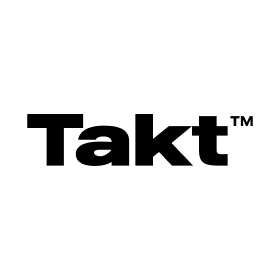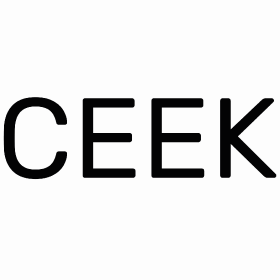
7 Steps to Develop an Effective PPC Campaign Strategy
If you’re looking to make an impact with your digital marketing campaigns, a pay-per-click (PPC) campaign is often the go-to choice. PPC campaigns offer quick results and targeted reach, allowing you to target specific audiences or even particular keywords.
Developing an effective strategy for your PPC campaigns isn’t always easy; a lot goes into creating and managing successful ads. Here are some of the steps involved in developing an effective PPC campaign strategy so that you can get the most out of your advertising budget.

1. Determine Your Goals
Before launching any PPC campaign, it’s crucial to have a clear understanding of what your goals are. You can acquire a certain number of leads, increase sales, or create brand awareness. Whatever your objectives are, having them clearly defined before you begin is essential for creating an effective PPC campaign strategy.
The best way to do this is by setting SMART goals; objectives that are specific, measurable, achievable, relevant, and time-bound. This will help you set realistic expectations for your campaign and create a plan of action to achieve them. You should also consider who your target audience is; understanding the demographic you’re targeting will help you create ad copy and select keywords that are more likely to resonate with them. Data from your website, such as customer profiles or purchase history, can be beneficial here.
2. Target Your Audience
No marketing campaign is complete without a target audience. Select the most relevant demographics to ensure your PPC campaigns are successful and tailor your ads accordingly. A reliable marketing agency Growmeo can help you identify the best target audience for your campaigns and provide insights into what type of content or messaging is likely to resonate with them. The more specific and detailed you can be with your audience targeting, the better results you’ll likely get.
You can use various tools and techniques to narrow your options and define your ideal customers, such as Google Ads’ demographic targeting feature or Facebook’s audience insights tool. Both are great resources for gathering data on your target audience and creating ads that speak to them directly.
The more specific you can be when targeting your audience, the better, this will help ensure that your ads are only seen by people who are most likely to take action. If you’re targeting a broad audience, you may need to consider creating multiple ads with different messages for each demographic.
3. Set Your Budget
When it comes to PPC campaigns, budget is always a significant factor. Determining the amount you should spend on your ads can be challenging, but maximizing your return on investment (ROI) is essential.
Creating a budget matrix is the best way to set an adequate budget for your campaigns. This will help you identify the amount you’re willing to spend per click and keyword and set a limit on how much you’re willing to pay for each campaign. Once you have your budget, monitoring it closely and adjusting it as needed is essential. Keep an eye on your campaigns’ performance and ROI to ensure you get the most out of your budget.
4. Choose Your Platforms
Not all PPC campaigns are created equal. Different platforms offer different features, ad formats, and targeting options, so choosing the one that best fits your needs is important. Google Ads is the most popular platform for creating ads, as it offers a range of tools and features for creating effective campaigns. Other popular choices include Bing Ads and Facebook Ads.
The platform you choose will depend on your goals and budget and the type of audience you’re targeting. It’s a good idea to research each platform and compare them to find the one that best matches your needs. Consider using a paid search engine marketing (SEM) tool to help you manage and optimize your campaigns across multiple platforms.
5. Write Compelling Ad Copy
Ad copy is one of the most critical components of a successful PPC campaign. Your ads must be informative, engaging, and persuasive to capture your target audience’s attention. Writing compelling ad copy takes time and practice, but there are some key elements you should keep in mind. Focus on keywords relevant to your product or service, clearly communicate the benefits of your offering and use powerful calls to action to encourage people to take action.
You should also consider testing different ads against each other to see which ones are performing better. This is a great way to hone in on the most effective copy for your campaigns.
Finally, make sure your ad copy is optimized for mobile devices. Mobile users are more likely to take action on ads, so it’s essential to make sure your ads look great and are easy to read on smaller screens.
6. Optimize Your Landing Pages
Your ads are only as good as the landing pages they lead to. If your landing page is optimized for conversions, then you’re saving time and money on PPC campaigns that won’t bring in results. Ensure that your landing pages are effective and have a clear call to action, relevant content, and an easy-to-use checkout process.
Additionally, consider A/B testing different versions of your landing page to see which one performs better. Some other tips for optimizing your landing pages include using persuasive copy, highlighting customer reviews, and ensuring the page loads quickly. The ultimate goal is to make sure your visitors can find the information they need quickly and easily, so they can take action.
7. Monitor and Adjust Your Campaigns
PPC campaigns sometimes work differently from the start. You may need to make adjustments over time to optimize your campaigns for better performance. Monitoring your campaigns is essential to ensure they run as efficiently and effectively as possible. Keep an eye on key performance indicators (KPIs) such as click-through rate (CTR), cost per click (CPC), and conversion rate, and make changes where necessary.
You should also consider using automation tools to help you manage your campaigns. Automation can help you save time and effort and ensure your campaigns are running smoothly. The right automation tools can also help you identify opportunities to optimize your campaigns for better results.
PPC is an excellent tool for driving traffic and leads to your business. With the right strategy in place and the proper management of your campaigns, you can get great ROI from your efforts.
By following these steps, you’ll be well on your way to creating successful campaigns that will bring quality results.

























